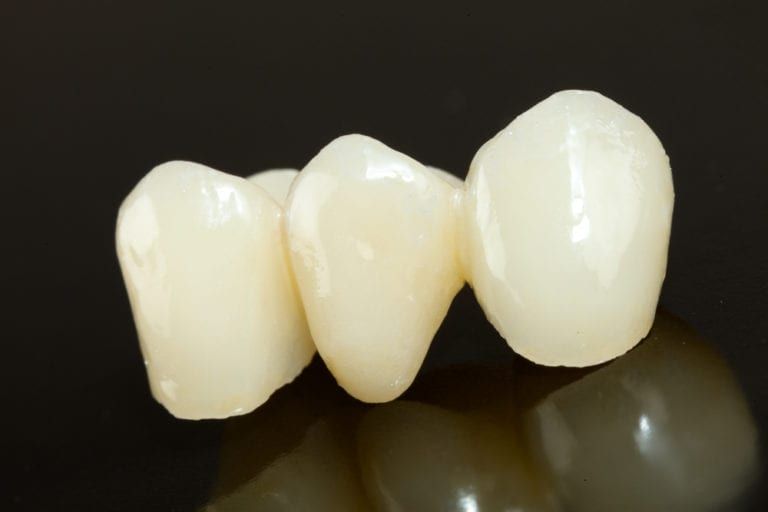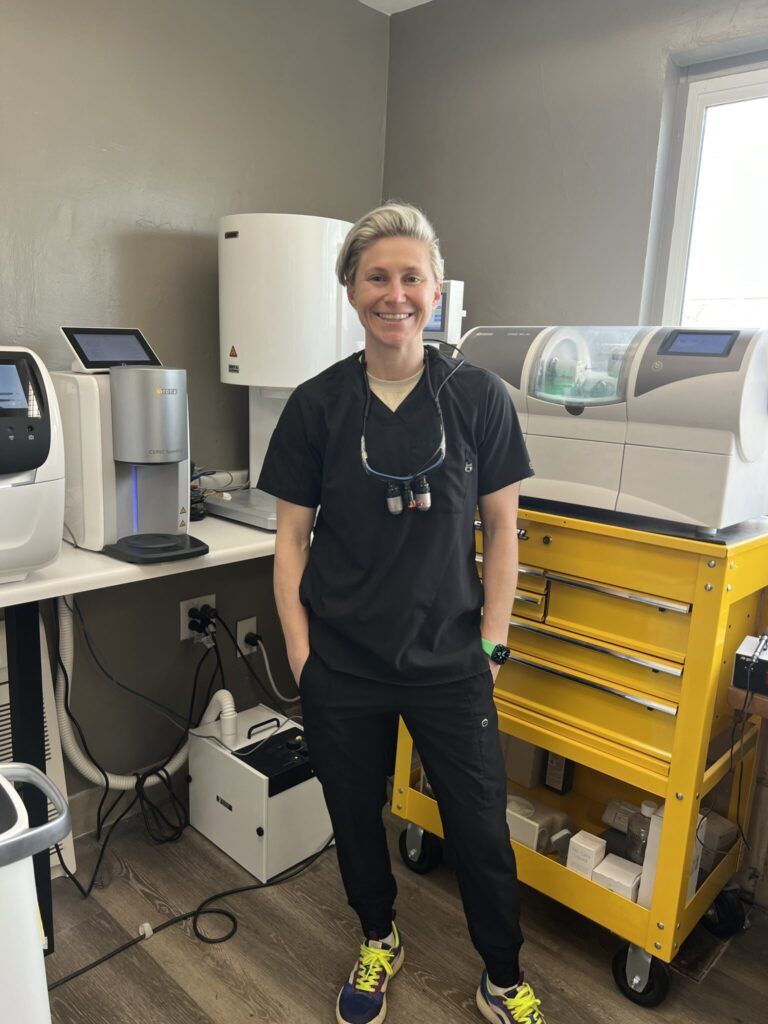Crowns and Bridges

Dental crowns and bridges represent two essential forms of dental prosthetics utilized for restoring decayed, damaged, or absent teeth. A dental crown functions as a protective cap placed over an individual tooth, safeguarding it from further damage. On the other hand, a dental bridge is employed to replace one or more missing teeth, consisting of two crowns positioned on either side of the gap, with a pontic, or artificial tooth, bridging the space between them. In instances of multiple missing teeth, various pontics may be employed, or alternative restoration techniques may be advised.
At Sunset Dental Group, we exclusively utilize Porcelain or Zirconia materials for crafting our crowns and bridges, abstaining from the use of metal. The selection of crown material is determined by factors such as aesthetics and the tooth’s location within the mouth.
Our primary objective is to deliver same-day, in-office single crowns, ensuring that you depart with your new permanent tooth promptly. This procedure typically spans about 1 hour and 45 minutes. During most of this time, you can scroll on your phone while your crown is being fabricated in our JAZ (Jerry, Amanda & Zak) Lab. We can even take you on a tour of our lab, enabling you to witness the fabrication of your teeth in real-time.
In scenarios where same-day crown fabrication isn’t feasible (such as with multiple crowns or bridges), two appointments are scheduled. The initial appointment entails tooth preparation and obtaining a digital dental impression for our in-house lab. The subsequent appointment is dedicated to fitting and affixing the permanent restoration. Should same-day crown fabrication not be possible, we provide a temporary crown to cover your prepared teeth until the permanent crown is ready. Our objective is to have your new teeth within 1-2 weeks.
To learn more about dental crowns & bridges, schedule a consultation with Dr. Amanda Rae Kronquist and Dr. Zakary Kronquist of Sunset Dental Group today. Sunset Dental Group serves Santa Ana and other central Orange County communities.
